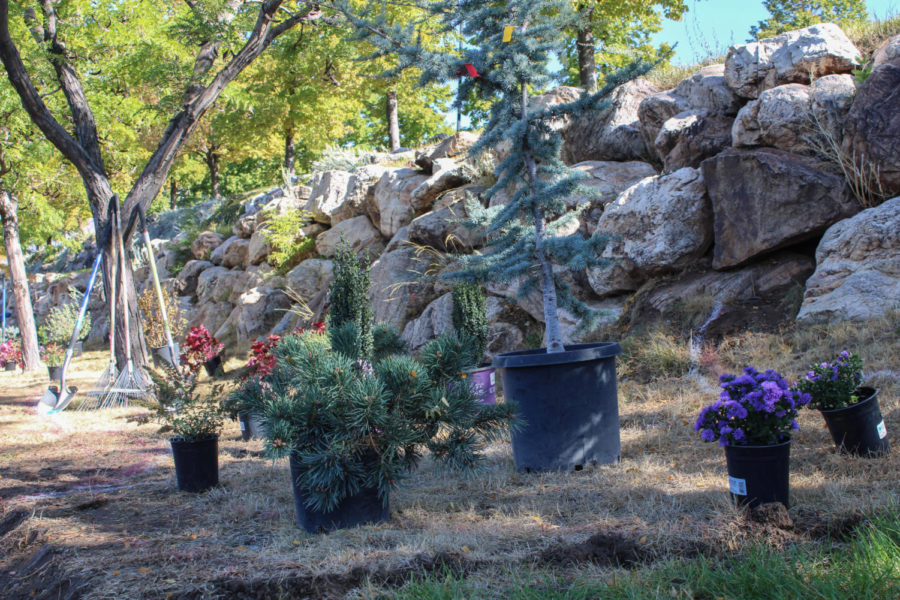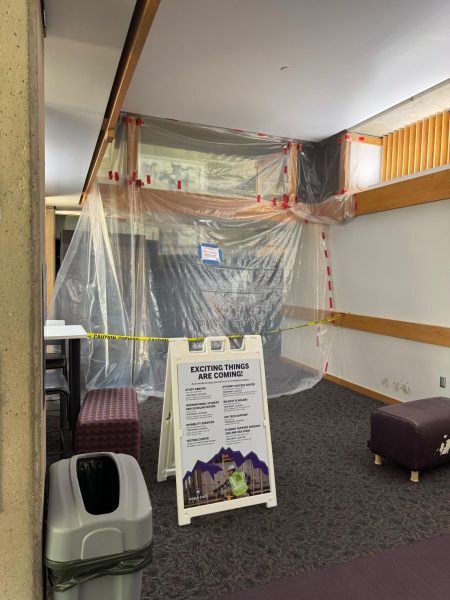Sustainable ‘scaping
On Oct. 5, Weber State University’s Sustainable Clubs, landscapers and the Center for Community Engaged Learning hosted a xeriscaping service project. This project focused on inviting students, faculty and community members to help convert WSU into a greener campus. It was conducted in the spirit of Homecoming Week and each participant received a Homecoming 2022 T-Shirt, pizza and snacks for lending a helping hand.
Xeriscaping is landscaping that requires little to no irrigation and is most popular in the Western United States’ dry regions. Many colleges and universities across the United States are working on converting their campuses into xeriscape.
Participants gathered at the east side of parking lot W7 to plant different kinds of water-wise vegetation, succulents and to pour mulch to transition the parking lot’s landscape while maintaining an aesthetic appearance. Volunteers learned landscaping skills, more about water conservation efforts and what efforts are being made on WSU’s campus.
This project is not the first of its kind. There are many projects hosted on campus each year aiming to decrease WSU’s water usage as a whole. Celina Patino, administrator of the garden club, organized the xeriscaping project that occurred during homecoming week and let those involved know there are more projects are to come.
“The Energy & Sustainability Office, Facilities Managements landscapers, and the Environmental Ambassadors coordinate a xeriscaping project each semester to increase the amount of xeriscaped landscape at WSU,” Analeah Vaughn, the sustainability coordinator, said. “A xeriscape plan was recently created that maps out about 750,000 square feet of areas we hope to transition.”
WSU is not the only university in Utah converting to a xeriscape lifestyle. Many other universities are making the switch as a part of the water conservation efforts state-wide. Campuses making the change include the University of Utah, Snow College, Southern Utah University, Utah Tech University, Utah Valley University and Salt Lake Community College.
“WSU is a leader in the community and it’s important to set the standard for more water-wise landscaping moving forward,” Vaughn said. “WSU has committed $2 million to campus xeriscaping projects.”
This project is part of the greater WSU Water Action Plan.
WSU’s Water Action Plan aims to decrease campus water use by 30% by 2025. It is not only xeriscaping; WSU has also replaced toilets to be water-wise toilets approved by the Environmental Protection Agency. They also have installed weather-sensitive irrigation systems to reduce water waste alongside many more projects.
“When we switch from traditional turf to a xeriscaped landscape, we automatically save 1/3 of the water,” Larry Collinwood, WSU’s head landscaper, said. “More water can be saved depending on the sprinkler type, the vegetation if there are trees.”
WSU’s initiatives toward a sustainable campus hope to improve the planet and preserve the natural wonders for future generations to see. Students have expressed appreciation over WSU’s efforts to be more sustainable.
“I think it’s great that Weber is making active efforts to conserve water and improve our planet.” Ma’ilei Muti, a WSU student, said. “I absolutely would participate in xeriscaping projects on campus. Everyone should celebrate and work towards a healthier planet.”













